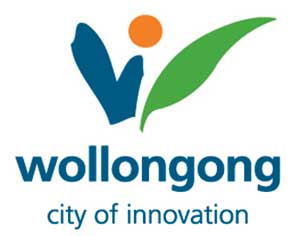For the History Buffs!
Bulli is a suburb in the Wollongong Local Government Area in the Parish of Woonona, County of Camden.
The name Bulli appears to have been first recorded in the Sydney Gazette of 22 April 1815 when it was reported that one of a party searching for lost cedar-getters was at a place called “Boyle”, thirty five miles south of Port Jackson. In 1823 reference was made to a small land holding at “Bull Eye”. A three hundred acre grant was promised to Cornelius O’Brien on 31 March 1821. His quit rent of six shillings a year was to commence on 1 January 1827. Cornelius O’Brien’s house was the only one in this part if the district for some years. It was on the property of Cornelius O’Brien, and his neighbour William Bowman, that the township of Bulli was built.
In 1841 the estate of Bulli, consisting of nine hundred acres, was offered for private sale. Later the estate was subdivided into farms of twenty five to one hundred and sixty five acres. For many years the name Bulli was used for all the country from Wollongong north to Coalcliff. The original Aboriginal name for the area was Bulla of Bulla Bulla, meaning “two mountains” (Mt Kembla and Mt Keira). Other meanings of the name Bulli have been given as “white grubs” and “place where the Christmas Bush grows”.
Early Industry
Bulli, a small coal mining township located at the northern end of the Illawarra district, first came into prominence in 1850 when Captain Westmacott made formal application to open up the Bulli coal field. The powerful Australian Agricultural Company promptly opposed the proposition but the Crown Law Offices refused to admit that the latter company had a monopoly and informed Westmacott that he could proceed with his plans without official interference. However, little seems to have been done insofar as actual mining was concerned, and the scheme was eventually abandoned.
Further delving into the mountain side occurred about 1859 and a company, known as Bellambi and Bulli Coal Company, was formed with a capital of thirty thousand pounds. Operations commenced at the Bulli Mine in 1861 when a tunnel or adit was driven into the seam about four hundred feet above sea level. The workings were connected with the sea-board by a standard gauge tramway. The line was officially opened in 2 June 1863. The first ship loaded with Bulli coal from the new jetty was the “Ironside”. The Ship left with a cargo of seven hundred and fifty tons.
In about August 1878, a second mine known as the “B” Pit, was established on the hillside to the north of the old Bulli workings, near the famous Bulli Pass. The “B” Pit had a very chequered history and after a period of about seven years the mine closed.
In 1879 an article in the Town and Country Journal stated that “the Bulli mine is the most important mine in the Illawarra, and its development is proceeding at an astounding rate. The company are working a fine seam of coal, by the inexpensive process of a single adit or tunnel. Not fewer than three hundred and fifty hands are now employed”.
On 23 March 1887 the company gained world-wide notoriety in connection with the explosion at Bulli Mine. Eighty one persons were killed. Rescue work was immediately organised and the parties worked with great courage in clearing away debris and fallen ground to gain access to the mine.
The mine was closed down in 1987 after 125 years of operation. A number of old timber cottages, shops and other buildings survive from the nineteenth century.
(Eardley, 1954)
Timeline
1817 Cornelius O’Brien settled at Bulli Point
1844 Cattle stealing was said to have been carried on to some extent at Bulli.
1858 Robert Sommerville opened a sawmill in July
1859 About this time a company known as the Bellambi and Bulli Coal Company was formed.
1861 A School of Arts called Bellambi & Bulli School of Arts was opened.
1861 A Roman Catholic School was conducted by a Miss McNamara in a slab building.
1861 A Sunday school was in operation, it was taught by Messrs. Sommerville and Salter in the house of Mr & Mrs Salter.
1863 The Bulli Coal Company officially opened its mine on the mountainside west of Bulli Point.
1863 Overseas trade started when the Ironside carried the first shipment of coal to Shanghai.
1863 Wheeled vehicles began using the Bulli Pass.
1865 The Uniting Church was built for the Wesleyans of the Bulli district.
1867 The miners campaigned for extra pay as compensation for the larger coal skips which had been introduced by the Manager
1867 Bulli Pass Road was built
1868 July, The board of the Bulli Company donated fifty pounds and land valued at one hundred pounds for the establishment of a public school in July
1869 Alexander Ross, Richard White and Samuel Smedley were appointed to the School Board
1869 The Bulli Post Office was opened on 1 October 1869
1879 Bulli grew to have five stores
1880 Archbishop Polding travelled to Bulli in July to bless a new school-church being erected
1887 The Bulli Mine Disaster occurred on the 23 March 1887 – 81 men died.
1887 The Wollongong to Clifton section of the South Coast railway was opened
1889 The Bulli Hotel opened its doors for business on the 6 September 1889
1891 The abandoned Bulli “B” Pit was reopened by Messrs. Williams and Garlick on 11 February
1892 The first shipment from Bulli Pass collliery was made on 2 June 1892
1893 Bulli District Hospital opened on land given by Mrs George Organ
1895 The “B” Pit was renamed the Bulli Steam Coal Company by a Mr Evans
1907 In April severe gales raged off the South Coast and swept away the greater portion of the Bulli Coal-loading jetty.
1910 Bulli Shire Council secured a town water supply for the Bulli area about 1910
1913 An electricity supply was obtained from South Bulli Colliery for lighting homes and streets
1950 About this time the Australian Iron & Steel Company undertook the formidable and costly task of re-organising and modernising the old Bulli Colliery and its outmoded rail transport system
Bibliography
- Bulli Beach Tourist Park, Wollongong City Council, 2001
- McDonald McPhee Pty Ltd. City of Wollongong Heritage Study, Wollongong City Council, Wollongong, 1991
- Davis, Consett. Plant Ecology of the Bulli District, Linnean Society of NSW, Sydney, 1936-1941
- Eardley, Gifford. The Bulli Coal Mining Company, Australian Railway Historical Society, 1954
- Gordon, David F. The Illawarra Escarpment Park, Illawarra Natural History Society & South Coast Conservation Society, Wollongong, 1985
- Illawarra Mercury
- King, Norman Spencer. Cornelius O’Brien: Pioneer of Bulli, Illawarra Historical Society, Wollongong, 1965
- Lindsay, B. Early Land Settlements in the Illawarra (1804 – 1861), Illawarra Historical Publications, Woonona, 1994
- Local Studies Cutting’s File
- Mills, Kevin. Illawarra’s Naturalised Trees and Shrubs: a field guide, K. Mills & J Jakeman, Woonona, 1988
- Ninety Years On: celebrating the ninetieth anniversary of the opening on 7th July 1869 of Bulli Public School 1869-1959, Bulli, 1959
- Sandon Point: a community vision, Bushland Management Strategy 2003 and Beyond, Produced by the Tramway Wetlands Planning Committee; NIRAG, Illawarra, 2003
- Singleton, C C. Railway History in Illawarra New South Wales, Illawarra Historical Society, Wollongong, 1970
- Sydney Mail
- Sydney Gazette









